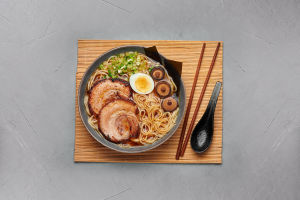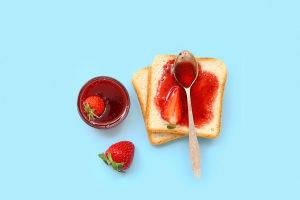Hey Lykkers! Do you ever feel like your meal isn't complete without a little something sweet at the end? It's almost like there's a second stomach reserved just for dessert, right?
We all have that irresistible craving for something sweet after a big meal, but why is that? Well, today, we're diving into the sweet science behind this and exploring why desserts are traditionally served after a main meal.
Sweet Cravings: A Habit or Science?
Some people believe that wanting dessert after dinner is a habit that goes way back. Maybe when we were kids, after a big meal, our parents would serve us fruit or a little treat to "help with digestion". In fact, it's pretty common for many to associate dessert with finishing off a meal, a feeling of satisfaction that makes everything feel complete. And while it might seem like a bad habit, there's actually science behind it.
Our appetite tends to decrease after we've eaten a savory meal because our taste buds are saturated with salt and umami flavors. At this point, a sweet dessert acts like a reset button for our taste buds. It provides a new flavor profile that wakes up our senses and makes us feel better.
Dessert has a magical ability to make us feel good by lifting our mood, partly due to the release of serotonin (a happiness-boosting hormone) triggered by the sugar intake.
The Psychological Side of Dessert
Some experts also refer to this as "sensory-specific satiety", which is basically the phenomenon of feeling full after eating the same type of food for a while. But when something new or different, like a sweet treat, is introduced, our appetite is refreshed.
Ever noticed how after savoring a delicious savory meal, you suddenly find room for that chocolate cake? It's because your brain gets excited by the idea of something sweet, and your taste buds are eager to experience the new flavors.
As kids, many of us grew up hearing our parents say, "A little sweet to balance out the salty is the best!" In a way, we've been conditioned to crave that balance, and now we can't resist a sugary bite after dinner!
Sweet Endings: A French Tradition
Now, let's talk about the French, the ultimate masters of dessert. In French, the word for dessert actually comes from the term “desservir,” which means “to clear the table.” In other words, desserts are meant to be served after all the savory dishes have been cleared away, marking the end of the meal.
This practice of serving something sweet at the end of a meal started back in the medieval times in France. Back then, desserts included fruits, cheeses, pies, and cookies.
Over time, the idea of "dessert" evolved into what we know today as a sweet dish served at the end of a meal, especially in restaurants. This tradition has spread worldwide, but it's particularly strong in France, where finishing a meal with a dessert is considered essential for a truly complete dining experience.
Classic French Desserts You Must Try
Now that we know why dessert is so important, let's talk about some classic French desserts that are typically served after dinner.
1. Crème Brûlée (Caramelized Custard)
This iconic French dessert features a creamy vanilla custard base topped with a crispy, caramelized sugar layer. The contrast between the smooth custard and crunchy sugar makes it absolutely irresistible. It's a staple in French bistros, and you'll often find it paired with a scoop of vanilla ice cream or whipped cream.
2. Ile Flottante (Floating Island)
This delightful dessert consists of fluffy meringue floating on a sea of rich vanilla custard, often topped with caramelized almonds. It's a beautifully light dessert that melts in your mouth, and it's often served with a touch of fruit syrup, like strawberry or raspberry, to add a little extra sweetness.
3. Baba au Rhum
For those who enjoy something a little more indulgent, Baba au Rhum is a perfect choice. This spirit-soaked cake is made with a rich yeast dough, which is then drenched in spirit syrup and served with whipped cream. It's decadent, and sweet, and definitely not for the faint-hearted!
4. Soufflé (Fluffy Meringue Cake)
A soufflé is light, airy, and perfect for those who prefer a less rich, but equally satisfying dessert. Made from whipped egg whites and a flavorful base like chocolate or vanilla, soufflés need to be eaten quickly after they're served, as they'll start to deflate. The moment they come out of the oven, they're pure magic!
Sweet Final Thoughts
So, there you have it, Lykkers! Now you know the reasons behind our irresistible craving for dessert after every meal. It's not just a sweet habit, it's rooted in science and culture, especially in the French tradition. Whether it's a comforting crème brûlée or a light soufflé, dessert is more than just a treat—it's the perfect way to end a meal on a sweet note.
Next time you're at a restaurant, remember: dessert isn't just an afterthought; it's the grand finale that completes your dining experience. So, go ahead, indulge in that sweet treat. Your taste buds (and your mood) will thank you for it!


